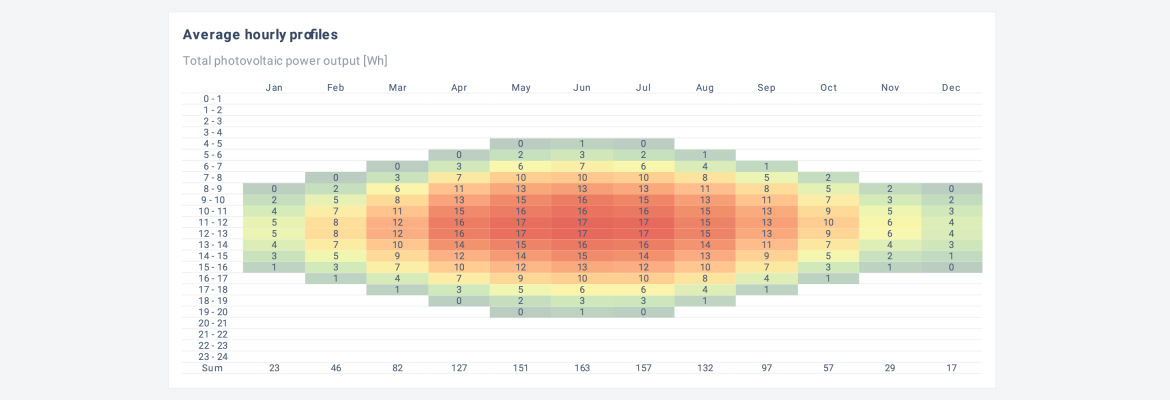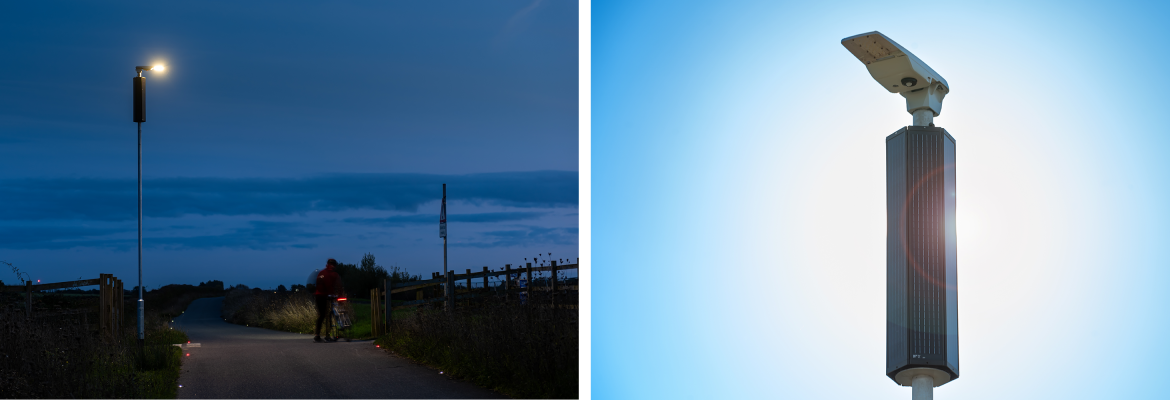Making Winter Work
March 2025
March 2025
OPINION
Solar street lighting is becoming an increasingly popular choice as a sustainable solution for outdoor illumination. But, when it comes to evaluating these systems, the common metric of ‘autonomy’ is often either oversimplified or misunderstood.
In this article, which first appeared in the Lighting Journal (March 2025), Alan Grant offers insights into how autonomy calculations may not accurately reflect real-world performance—particularly during challenging seasonal conditions such as winter.
Unlike traditional grid-connected systems, off-grid solar lighting – as many ILP members will be well aware – operates independently, using solar panels to capture sunlight during the day and storing that energy in batteries for nighttime use.
This independence makes off-grid systems particularly valuable for illuminating roads, paths, and public spaces in remote or rural locations, where extending the electrical grid can be both costly and logistically challenging.
However, despite these advantages, solar lighting systems must be carefully designed to perform reliably through all seasons – particularly in winter, when extended nights and limited sunlight create unique challenges.
|
|
|
Alan Grant, Design & Development Director With extensive industry experience spanning over 30 years, Alan has a unique ability to translate technical complexities, such as the effects of colour temperature and light quality on human physiology. As Design and Development Director at DW Windsor, Alan is responsible for the creation of new products and for bringing new technical innovations to market. |

In response to these demands, the concept of ‘autonomy’, or the measure of how long a solar lighting system can operate without recharging, is often highlighted as a key performance metric. While autonomy can offer insight, it is only one part of the picture. Autonomy figures, typically calculated under ideal conditions, may not always reflect real-world performance, particularly in challenging seasonal conditions.
Understanding the challenge of winter solar
Among the greatest challenges for off-grid solar lighting is maintaining reliable performance throughout the winter months, when the days are shortest and the nights are longest. Solar lighting systems in winter must contend with reduced daylight hours available to recharge batteries, lower sun angles that can limit energy capture, and frequent cloud cover – particularly in northern regions – which further decreases the amount of energy that can be collected.
These seasonal limitations can be particularly demanding for systems designed with autonomy in mind, as autonomy calculations are often based on ideal or average sunlight conditions that don’t align with winter’s demands. This winter reality is one of the main reasons why autonomy can be a misleading metric in off-grid lighting.
Autonomy measures the number of days a system can operate without recharging, implying that high autonomy values ensure reliability even through stretches of cloudy weather. Yet, autonomy calculations typically assume the battery starts fully charged and that consistent sunlight is available – neither of which is guaranteed or likely in winter conditions. Furthermore, autonomy figures often overlook significant variability in sunlight availability by season and location.
For example, autonomy ratings calculated in southern regions with ample sunlight won’t reflect the same reliability in overcast northern winters. By simplifying such complex requirements into a single value, autonomy fails to capture the real-world challenges that off-grid lighting faces during the most demanding times of the year.
While autonomy can offer insight, it is only one part of the picture. Autonomy figures, typically calculated under ideal conditions, may not always reflect real-world performance, particularly in challenging seasonal conditions.
The 'Power Design' Alternative
At DW Windsor, we believe ‘power design’ offers a far more practical and realistic approach to designing off-grid solar lighting than autonomy alone. Power design takes into account all the factors necessary for consistent lighting performance, adapting to each project’s specific needs and conditions to ensure reliability across all seasons.
So, how does this work? To deliver a system that meets the exact needs of each project, we begin by gathering essential information from the client. Each question we ask serves a specific purpose, ensuring that we have a complete picture of the project’s demands. So, for example:

In our view, using ‘power design’ ensures that the solution is not only tailored to the project's unique conditions but is also cost-effective. It's easy to over-specify a product in an attempt to maximise reliability, but doing so increases costs unnecessarily. By focusing on the actual requirements – rather than relying on arbitrary autonomy figures – we believe it is possible to deliver a system that meets both performance expectations and budget constraints.
Once we understand the project requirements, the next step is to create a lighting design that carefully maps out the placement of luminaires and defines the appropriate lighting class. This stage ensures that the system will deliver uniform, adequate illumination across the area, tailored to the specific application. Proper luminaire positioning and selection are essential for achieving the desired lighting performance while maximising efficiency.
After defining the lighting needs, we turn our attention to the project location. By analysing the specific site, we can estimate the average hourly photovoltaic (PV) power output based on December’s solar data because of, again, being the month with the lowest sunlight availability. Focusing on December ensures that our design accounts for the most challenging conditions, providing a solution capable of performing reliably year-round.
With this information, and knowing the project’s lighting requirements, we can build a solution around these parameters. This involves designing a system that captures sufficient solar energy to charge the battery fully and deliver the required illumination levels throughout the night, even during the darkest months.
Conclusion
To conclude therefore, while autonomy may seem like a convenient measure of solar performance, it often fails to capture the complexities of seasonal and location-specific challenges. Using a power design approach, conversely, addresses these factors, allowing you to craft lighting solutions tailored to each project’s unique environment and requirements. By focusing on the variables that truly impact performance, it is possible to ensure that off-grid lighting systems are both dependable and efficient, whatever the season.